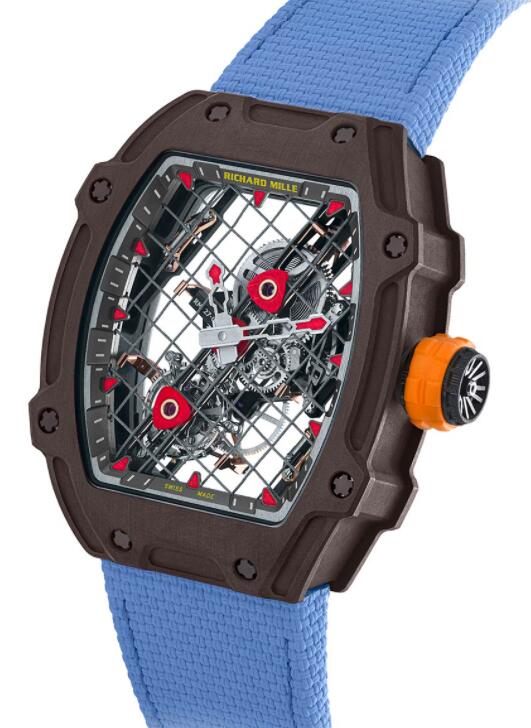
The exquisite case structure is one of the most unique aspects of Richard Mille cheap watches. Although the degree of successful integration of the case and the movement has been very different in RM design over the years, it is still the core element of its charm. design. The fusion of the case and the movement is both beautiful and mechanical. Since each movement is essentially tailor-made for the case, there is no need for (much cheaper) spacers and movement rings that are common in watchmaking, even though the engineering design of the RM 72-01 is not perfect. The brand new RM 27-04, with a well-designed cable suspension system, its movement is still mounted on the elastic shock-absorbing block, which is the interface between the case and movement of many RM watches (of course, this is approximately One-fifth of the cost) RM 27-04 is the same). For a watch with this technical character, the water resistance at 30 meters seems a bit low, but for general use, this number is sufficient (and for many luxury chronographs, too).
In short, Richard Mille and his most iconic works are the structure and overall aesthetics of the case. Let us now look at the CRMC-1 movement.
Richard Mille (Richard Mille) movements, especially in watches with a specific technical direction (for example, I do not include Bonbon watches here, I think there will be a general agreement), usually technically superb The combination of watch craftsmanship and traditional movement finishing technology; usually, precious metals and technical metals are also combined. Calibre CRMC-1 continues along this long history. The movement is self-winding, the dimensions are 29.10mm x 31.25mm and 6.05 mm, and the power reserve is 50 hours; the winding is made by a skeletonized platinum rotor.
Of course, this is not the first flyback chronograph introduced by Richard Mille. For example, the RM 011 launched in 2007 is a flyback chronograph with an annual calendar. RMAC1 is a Dubois-Depraz module from Vaucher – but RM believes that the CRMC-1 was produced entirely in Les Breuleux’s RM workshop. The traditional finishes of the movement include hand-polished side wings, bevels and counter holes. However, the movement plate and bridge are grade 5 titanium.
Technically speaking, the movement is a combination of existing or even classic mechanical solutions with some new mechanical solutions. The switching of the chronograph is realized by the column wheel mechanism. As with most flyback chronographs, pressing the lower button while the chronograph is running will reset the chronograph, but will not stop the timing, and when the lower button is released, the chronograph will immediately resume operation. In the non-running state, use the upper button to stop the chronograph, and then press the lower button to reset the chronograph to zero.
However, the most unusual function of the movement is the clutch system. The three most common clutch mechanisms for chronographs are the lateral clutch (as seen in the Vacheron Historiques Cornes de Vaches), the vertical clutch (as seen in the Rolex Daytona), and the tilt pinion system, which is the most common ETA/ Valjoux 7750 and its many variants.
Each has its own specific characteristics and advantages; the lateral clutch system has a long history, and of course there are old mechanical aesthetics. The vertical clutch reduces the load on the moving train when the chronograph is started, and also reduces or even eliminates the slight jump of the chronograph second hand when using the side clutch; the tilt pinion system is compact, simple and reliable. No matter which system is used, there is usually only one clutch system, but as far as I know, the RM caliber CRMC-1 uses a unique dual-tilt pinion system. replica automatic watches